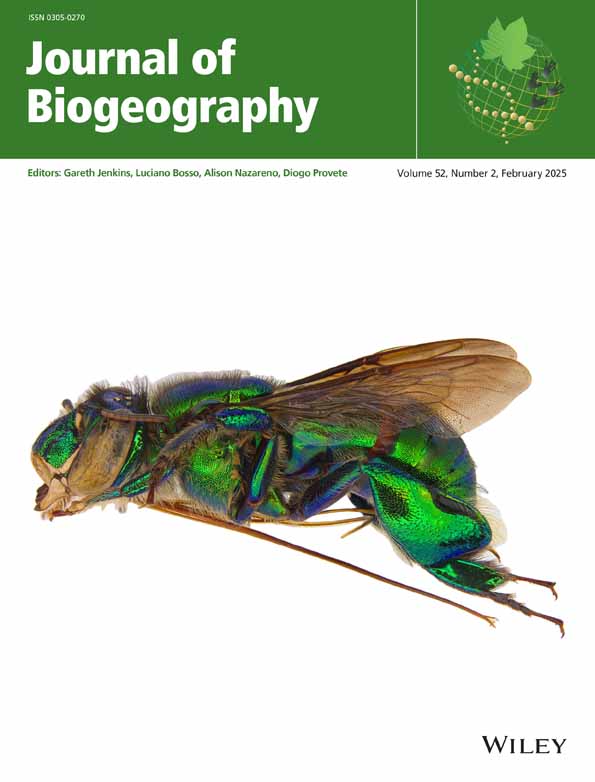Phylogenetic Diversity and Dispersion of Angiosperms in Plant Communities Along an Elevational Gradient in the Western United States
Funding: This work was partly supported by the Innovation Program of Shanghai Municipal Education Commission (2023ZKZD36) to J.Z. No permit was required for this work.
ABSTRACT
Aim
Phylogenetic niche conservatism predicts that species tend to retain the ecological traits of their ancestors. Accordingly, communities developing under more stressful conditions should be more strongly structured by environmental filtering than communities in less stressful conditions, and thus would exhibit lower phylogenetic dispersion and diversity. Elevational gradients offer unique opportunities to studying, among others, phylogenetic structure patterns across climatic gradients because the geographic distance of the same length of a climatic gradient is much shorter along an elevational gradient than along a latitudinal gradient. Here, we examine the relationship of phylogenetic diversity and dispersion of angiosperms in local communities with elevation and climate along a temperate elevational gradient.
Location
The Siskiyou Mountains in the western United States.
Taxon
Angiosperms.
Methods
Phylogenetic diversity and dispersion of angiosperms in 236 local communities distributed along an elevational gradient ranging from 533 to 2103 m were related with elevation, mean annual temperature and annual precipitation using correlation and regression analyses. Variation partitioning analysis was conducted to assess the relative importance of temperature and precipitation in affecting phylogenetic diversity and dispersion.
Results
Phylogenetic diversity and dispersion in angiosperm communities generally decrease with increasing elevation but the opposite pattern is observed in the middle segment of the elevational gradient. The patterns are more conspicuous for herbaceous plants than for woody plants. Temperature is more strongly associated with phylogenetic diversity and dispersion of angiosperm communities compared to precipitation.
Main Conclusions
The patterns of phylogenetic diversity and dispersion in angiosperm communities along the elevational gradient in the Siskiyou Mountains are consistent with the tropical niche conservatism hypothesis, which predicts that communities in areas with lower temperature and precipitation would have lower phylogenetic diversity and dispersion.
Conflicts of Interest
The authors declare no conflicts of interest.
Open Research
Data Availability Statement
This study used plant data available in Figshare at https://doi.org/10.6084/m9.figshare.19661094.v1, and climate data available in the CHELSA climate database at https://chelsa-climate.org/bioclim.




